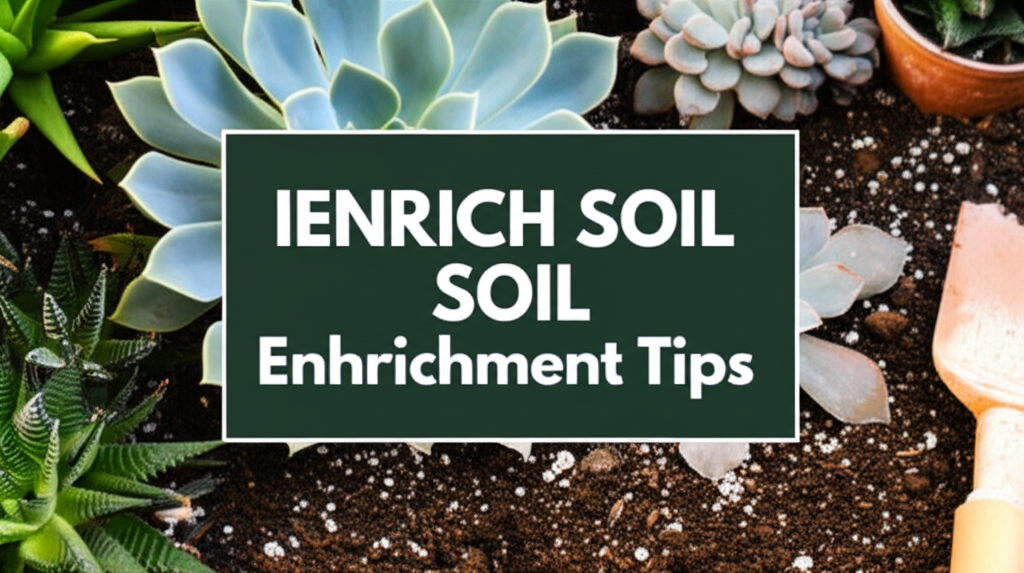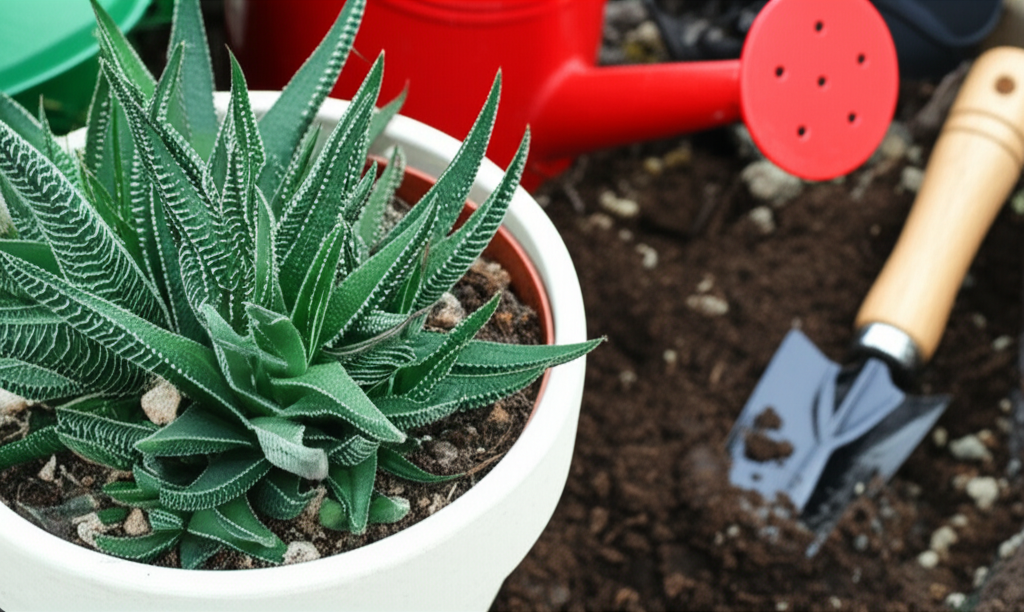Understanding the Foundation: Why Soil Matters for Ice Plants
Ice plants, scientifically known as Mesembryanthemum and its various relatives, are a fascinating group of succulents prized for their jewel-like epidermal cells (trichomes) that often glisten like ice. These unique adaptations allow them to thrive in harsh, arid environments. However, even the most resilient plants require the right soil conditions to flourish, and ice plants are no exception. Providing them with the correct soil enrichment is paramount for healthy growth, vibrant flowering, and overall plant vigor.
The “soil” in their native habitats is typically sandy, gravelly, and well-draining, with low organic matter. This is a crucial point for understanding their needs. Unlike many common houseplants that prefer rich, loamy soil, ice plants are adapted to conditions where water drains away quickly to prevent root rot. Therefore, when we talk about “enrichment” for ice plants, we’re not necessarily talking about adding more traditional compost or peat moss, which can hold too much moisture. Instead, we’re focusing on improving drainage, aeration, and providing a balanced nutrient profile suitable for their succulent nature.
This article will delve into the essential aspects of soil enrichment for ice plants, covering everything from understanding their native environment to specific amendments, fertilization strategies, and common pitfalls to avoid. By mastering these principles, you’ll be well on your way to cultivating a stunning collection of these captivating succulents.
Key Soil Requirements for Ice Plants

Before we discuss enrichment, it’s vital to grasp the fundamental soil characteristics that ice plants demand.
Drainage: The Absolute Essential
This cannot be overstated. Ice plants are extremely susceptible to root rot if their roots sit in waterlogged soil. Their native environments often feature porous substrates like sand, gravel, and weathered rock. Therefore, any soil mix you create must allow water to pass through freely and rapidly.
Aeration: Allowing Roots to Breathe
Good aeration goes hand-in-hand with excellent drainage. Plant roots need oxygen to survive and function. Compacted soil, common with heavy organic matter, suffocates roots, hindering their ability to absorb nutrients and water. Well-aerated soil allows air pockets to form, providing the necessary oxygen.
pH Level: A Slightly Acidic to Neutral Range
While ice plants are generally adaptable, most succulents, including many ice plant varieties, prefer a slightly acidic to neutral soil pH, typically between 6.0 and 7.0. Soils that are too alkaline can lead to nutrient deficiencies, particularly iron.
Nutrient Content: Less is More
Ice plants are not heavy feeders. They have evolved to survive in nutrient-poor soils. Over-fertilizing can lead to weak, leggy growth and a reduction in flowering. The focus should be on providing a balanced, low-nitrogen fertilizer during the growing season.
Native Soil Comparison vs. Ideal Potting Mix
To better understand how to enrich ice plant soil, let’s compare their natural habitat with what we aim to achieve in cultivation.
| Characteristic | Native Environment | Ideal Potting Mix |
|---|---|---|
| Drainage | Extremely High (sandy, gravelly, rocky) | Very High (fast-draining) |
| Aeration | High (porous substrate) | High (plenty of air pockets) |
| Organic Matter | Low | Low to Moderate (primarily for structure, not nutrients) |
| Moisture Retention | Very Low | Low |
| Nutrient Content | Low | Low to Moderate (balanced slow-release) |
| pH | Slightly Acidic to Neutral (variable) | Slightly Acidic to Neutral (6.0-7.0) |
Essential Amendments for Ice Plant Soil Enrichment
The art of enriching ice plant soil lies in selecting amendments that improve drainage and aeration without introducing excessive moisture retention or overly rich organic matter.
Inorganic Amendments: The Drainage Powerhouses
These are your primary tools for enhancing drainage and aeration.
- Perlite: A volcanic glass that is heated and expanded, perlite is lightweight, porous, and excellent for improving drainage and aeration. Its irregular shape creates air pockets, preventing compaction.
- Pumice: Another volcanic rock, pumice is similar to perlite in its drainage-promoting qualities. It’s heavier than perlite and can add a bit more stability to the pot.
- Coarse Sand: Horticultural or builder’s sand (NOT play sand, which is too fine) can be used in moderation. It adds grit and improves drainage, but too much can lead to a dense, heavy mix. Aim for coarse-grained sand.
- Gravel/Small Rocks: Small horticultural gravel or crushed granite can be incorporated into the bottom of pots for drainage layers or mixed into the soil. This is especially beneficial for larger containers.
Organic Amendments: Use with Caution
While ice plants don’t need a lot of organic matter, a small amount can provide some structure and a very mild nutrient boost.
- Cactus and Succulent Potting Mix: This is often a good starting point, as it’s already formulated with drainage in mind. However, you may still need to amend it further.
- Compost (well-rotted): Use sparingly. A small percentage of high-quality, well-rotted compost can add some beneficial microbes and a very gentle nutrient release. Avoid fresh compost or anything with a strong odor.
- Coco Coir/Chips: A sustainable alternative to peat moss. Coco coir can offer some aeration and moisture retention without becoming waterlogged like peat can if overused. Coco chips are even better for pure drainage.
Creating the Ideal Ice Plant Soil Mix: Recipes and Ratios
The best soil mix will vary slightly depending on your climate, watering habits, and the specific ice plant species you’re growing. However, here are some effective starting points:
General Purpose Ice Plant Mix
This is a versatile mix suitable for most ice plants.
- 2 parts Cactus and Succulent Potting Mix
- 1 part Perlite or Pumice
- 1/2 part Coarse Sand (optional, if using finer potting mix)
Aggressive Drainage Mix (for very humid climates or frequent watering)
If you live in a humid region or tend to water more often, prioritize drainage.
- 1 part Cactus and Succulent Potting Mix
- 2 parts Perlite or Pumice
- 1 part Small Gravel or Horticultural Grit
Enrichment for Garden Beds
When planting ice plants directly into garden beds, you’ll need to amend the existing soil.
- Assess Existing Soil: Determine if your native soil is clayey, sandy, or loamy.
- Incorporate Amendments: For clay or loam soils, generously mix in 30-50% of inorganic amendments like perlite, pumice, and coarse sand. You can also add a small amount of compost. The goal is to break up the heavy soil and create a fast-draining environment.
- Raised Beds: Consider planting ice plants in raised beds filled with a custom soil mix, especially if your native soil has poor drainage.
Fertilization Strategies for Optimal Growth
As mentioned, ice plants are not heavy feeders. Over-fertilization is a common mistake that can do more harm than good.
When to Fertilize
Fertilize only during the active growing season, which for most ice plants is spring and summer. Avoid fertilizing dormant plants in fall and winter.
Type of Fertilizer
Use a balanced, water-soluble fertilizer specifically formulated for succulents or cacti. Look for a ratio like 10-10-10 or even lower in nitrogen.
Frequency and Strength
Dilute the fertilizer to half or quarter strength of the recommended dosage on the package. Apply once every 4-6 weeks during the growing season.
Repotting and Soil Refreshment
Even with the best soil, it will eventually break down and lose its aeration properties. Repotting is essential for long-term plant health.
Signs Your Ice Plant Needs Repotting
- Roots growing out of drainage holes.
- Water runs straight through the pot without absorbing.
- Plant growth has slowed significantly.
- Soil appears compacted or degraded.
Frequency of Repotting
Young, actively growing ice plants may need repotting every 1-2 years. More mature plants can be repotted every 2-3 years or when they outgrow their containers.
Refreshing Soil During Repotting
When repotting, gently remove the old soil from the roots. You can reuse some of the old soil if it still has good structure, but it’s best to mix it with at least 50% fresh amendments to revitalize drainage and aeration. Replace any soil that has become compacted or is showing signs of disease.
Common Pitfalls to Avoid in Soil Enrichment
Understanding what not to do is as important as knowing what to do.
Overwatering
Even with the best soil, overwatering is a death sentence for ice plants. Ensure the soil dries out between waterings.
Using Fine-Grained Materials Exclusively
Relying solely on potting soil or fine sand will lead to compaction and poor drainage, negating your enrichment efforts.
Over-Compacting the Soil
When potting, gently firm the soil, but avoid pressing it down hard. Allow air pockets to remain.
Using Unsterilized Soil
Always use fresh potting mixes or sterilized amendments to prevent introducing pests or diseases.
Excessive Organic Matter
Too much compost or peat moss will retain too much moisture, leading to root rot.
Troubleshooting Soil-Related Issues
Even with careful preparation, you might encounter some challenges.
Yellowing or Mushy Leaves
This is a classic sign of overwatering and potential root rot. Ensure excellent drainage and allow the soil to dry out thoroughly. If the rot is advanced, you may need to repot and trim affected roots.
Stunted Growth or Lack of Flowering
This can indicate the soil is too dense, preventing proper root function, or that the plant is not receiving adequate light. Ensure your soil mix is well-aerated and the plant is in a sunny location.
Wilting Despite Moist Soil
This is counterintuitive but can also be a sign of root rot. Damaged roots cannot absorb water effectively, leading to wilting even in wet soil.
Conclusion: The Pathway to Vibrant Ice Plants
Enriching the soil for your ice plants is a straightforward yet crucial process. By prioritizing drainage and aeration, and by using the right amendments in appropriate ratios, you create an environment where these unique succulents can truly thrive. Remember that less is often more when it comes to nutrients, and always err on the side of caution with watering. With a well-prepared soil foundation, your ice plants will reward you with their characteristic crystalline beauty and a stunning display of color. Happy growing!
| Step/Consideration | Action/Description | Pros | Cons |
|---|---|---|---|
| Choose Potting Mix Base | Start with a quality cactus/succulent mix or create your own. | Provides a good starting point with some drainage. | May still require further amendment for optimal drainage. |
| Incorporate Drainage Amendments | Add perlite, pumice, or coarse sand. | Significantly improves drainage and aeration, prevents root rot. | Can make the mix lighter, requiring secure potting. |
| Limit Organic Matter | Use compost sparingly; avoid peat moss if possible. | Provides minimal nutrient boost and soil structure. | Excessive organic matter leads to waterlogging and root rot. |
| Achieve Proper pH | Aim for slightly acidic to neutral (6.0-7.0). | Ensures optimal nutrient uptake. | Most good mixes are naturally within this range; rarely an issue if using appropriate components. |
| Repot Periodically | Refresh soil every 1-3 years. | Maintains soil structure and aeration, prevents nutrient depletion. | Can be a disruptive process for the plant if not done carefully. |
| Fertilize Sparingly | Use diluted succulent fertilizer during the growing season only. | Supports healthy growth without promoting weak, leggy stems. | Over-fertilizing can burn roots or cause nutrient imbalances. |
| Water Wisely | Allow soil to dry out completely between waterings. | Crucial for preventing root rot. | Requires monitoring and understanding plant/environmental needs. |


